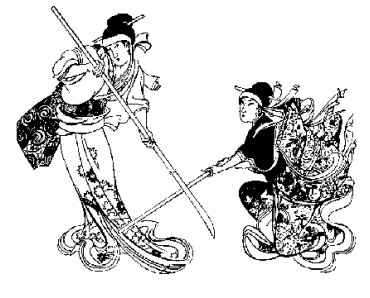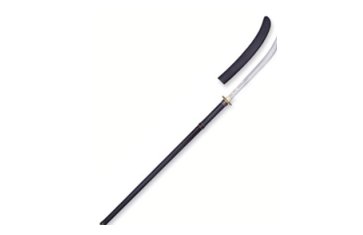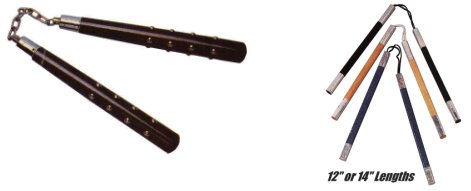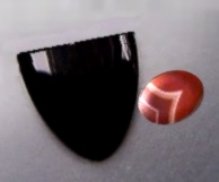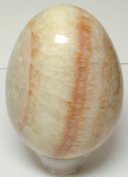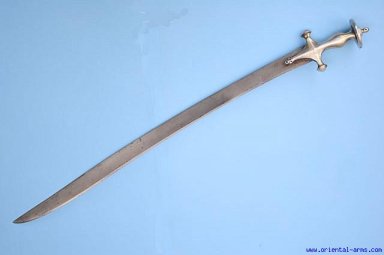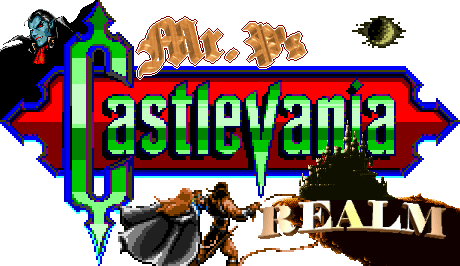
![]() Castlevania
Arsenal Origins
Castlevania
Arsenal Origins ![]()
| Item Name: | Lorica |
| Games In: | Curse of Darkness and Portrait of Ruin |
| Description: | "Lorica translates to 'armour' in Latin. There are different types of lorica used: Lorica hamata, lorica segmentata and lorica scamata. The picture below shows the lorica segmentata, the first type of laminated plate armor cuirass." |
| Picture(s): |
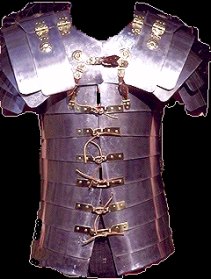 |
| References: | members.aol.com/gijchar/roman.htm |
![]()
![]()
| Item Name: | Lucky Clover |
| Games In: | Order of Ecclesia |
| Description: | "The four-leaf clover is an uncommon variation of the three-leaved clover. For 1 four-leaf clover there are approximately 10,000 three-leaf clovers. Four-leaf clovers have a tradition of bringing good luck to their finders. In legends, each leaflet represents something: Rhe first is for faith, the second for hope, the third for love, and the fourth for luck." |
| Picture(s): |
 |
| References: | www.flickr.com/photos/dalcrose/30572532/ |
![]()
![]()
| Item Name: | Mablung Sword |
| Games In: | Symphony of the Night |
| Description: | "Mablung was an elf from the army of Doriath in The Silmarillion. His name means 'Heavy Hand.' Mablung was also a soldier of Gondor in The Lord of the Rings." |
![]()
![]()
![]()
![]()
| Item Name: | Mach Punch |
| Games In: | Aria of Sorrow and Dawn of Sorrow |
| Description: | "Mach is refered to as the speed equal to sound. For example: If a plane is flying at mach-two, it means that it is flying at two-times the speed of sound." |
![]()
![]()
| Item Name: | Main Gauche |
| Games In: | Dawn of Sorrow and Curse of Darkness |
| Description: | "Main gauche means 'left hand' in French. It is a dagger used in the off-hand to assist in parrying." |
| Picture(s): |
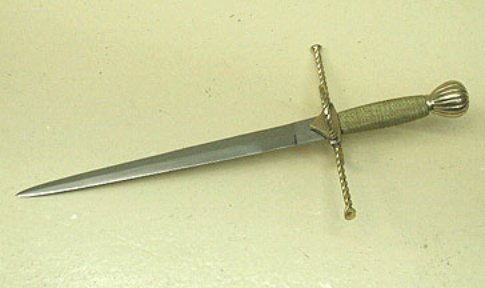 |
| References: | medieval.mrugala.net/Armes/Images/Main%20gauche.jpg |
![]()
![]()
| Item Name: | Masakado's Helm |
| Games In: | Curse of Darkness |
| Description: | "Masakado was a powerful Japanese landowner who rebelled against the central government of Kyoto. In 940 C.E., he was killed and his head brought back to the capital. The picture shows the tomb of Masakado, which contains only the head; it is located in Tokyo's financial district." |
| Picture(s): |
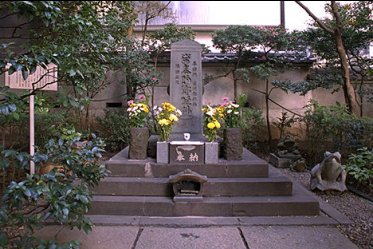 |
| References: | www.kiku.com/electric_samurai/cobweb_castle/image/masakado.jpg |
![]()
![]()
| Item Name: | Masamune |
| Games In: | Symphony of the Night and Dawn of Sorrow |
| Description: | "Masamune is not a weapon but a Japanese blacksmith who lived during the fourteenth century. He was said to be a good man whose swords were the best ever made. The Masamune often appears in Final Fantasy games; the best example would be the sword used by Sephiroth in Final Fantasy VII. (See also 'muramasa.')" |
| Picture(s): |
 |
| References: | lefalaipe.free.fr/.../ ff7%20sephiroth.jpg |
![]()
![]()
| Item Name: | Maximilian Armor |
| Games In: | Curse of Darkness |
| Description: | "This armor is named after the Holy Roman Emperor Maximilian I (1459-1519) in whose reign it first appeared. This armor is fluted, which strengthens the pieces and reduces the weight. It was used primarily in tournament lists and parades, since knights preferred a plainer, less expensive harness for the battlefield." |
| Picture(s): |
 |
| References: | www.humanities-interactive.org/medieval/chivalry/ex018_10a.html |
![]()
![]()
| Item Name: | Medusa Shield |
| Games In: | Symphony of the Night |
| Description: | "The game description says, 'Gorgon-Headed Shield.' 'Gorgon' is the family name of Medusa." |
![]()
![]()
| Item Name: | Megingjord |
| Games In: | Lament of Innocence and Dawn of Sorrow |
| Description: | "The magical belt worn by Thor to double his strength. (See also Mjollnir.)" |
| Picture(s): |
 |
| References: | www.collectingfool.com/unpublished/tuska-thor.jpg |
![]()
![]()
| Enemy Name: | Mercury Boots |
| Games In: | Portrait of Ruin |
| Description: | "Son of Jupiter, Mercury is the god of trade, profit and commerce in Roman mythology. The name comes from the Latin word merx, which means 'merchandise.' He is portrayed wearing winged boots and holding the caduceus, a herald's staff with two entwined snakes. He is the analogue of the Greek deity Hermes." |
| Picture(s): |
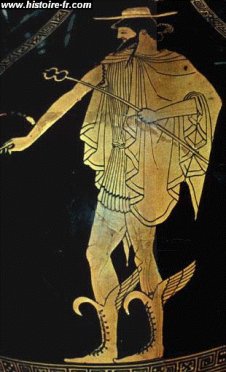 |
| References: | www.histoire-fr.com/mythologie_grecque_genese_2.htm |
| Item Name: | Midas Gold |
| Games In: | Curse of Darkness |
| Description: | "Historically, Midas was the king of Phrygia in the late 8th century, B.C. In Greek mythology, he is a king once rewarded by Dionysus. The god allowed him to change whatever he might touch into gold. When he found that even his food was turned into gold, he prayed to be delivered. Dionysus told him to wash in the Pactolus; he did so and his power passed into the river. This explains why the river was so rich in gold." |
![]()
![]()
| Enemy Name: | Minerva Greaves, Mail and Mask |
| Games In: | Order of Ecclesia |
| Description: | "The Romains goddess of wisdom, she is often depicted with an owl. Minerva is the daughter of Jupiter and one of the three supreme deities in Roman religion together with Jupiter and Juno. She is equivalent to the Greek goddess Athena." |
| Picture(s): |
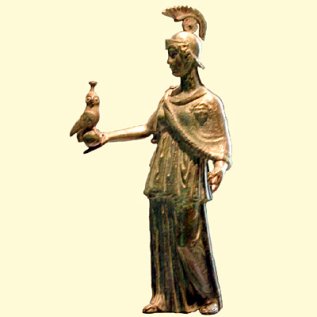 |
| References: | www.vroma.org/~araia/minerva.html |
| Item Name: | Mjollnir |
| Games In: | Dawn of Sorrow |
| Description: | "The hammer of the Viking god Thor. It was forged by dwarves. (See also Megingjord.)" |
| Picture(s): |
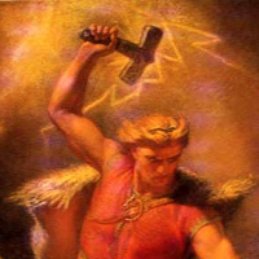 |
| References: | spiral-trip.halebob.org/thor.jpg |
![]()
![]()
| Item Name: | Morgenstern |
| Games In: | Dawn of Sorrow and Curse of Darkness |
| Description: | "A German word that translates to 'morning star.' It was a medieval weapon resembling a mace but with a large spike on the end and with smaller spikes around the circumference. It was used by both infantry and cavalry. It came into use in the beginning of the 14th century. The term 'morning star' is also applied erroneously to the military flail (right picture). (See also Mace.)" |
| Picture(s): |
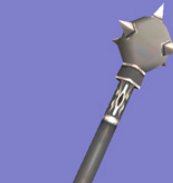 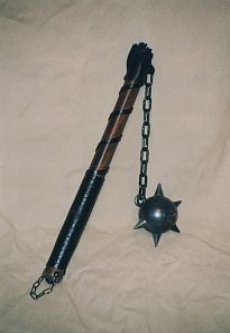 |
| References: | graphipedia.squares.net/image/Weapon/Club/morgenstern.jpg people.freenet.de/hortusbellicus/Morgenstern.jpg |
![]()
![]()
| Item Name: | Morion |
| Games In: | Harmony of Dissonance |
| Description: | "Although commonly thought of as a Spanish helm, the Morion became the popular style for the pikemen during the reign of Edward VI of England." |
| Picture(s): |
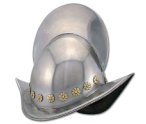 |
| References: | store1.yimg.com/I/ssrglobal2_1813_337827 |
![]()
![]()
| Item Name: | Mournblade |
| Games In: | Symphony of the Night |
| Description: | "A soul-eating sword present in Elric's Cycle, written by Michael Moorcock. Though they look like swords, Mournblade and her better-known twin sister, Stormbringer, were in fact creatures from another dimension who were used in the war against The Chaos." |
| Picture(s): |
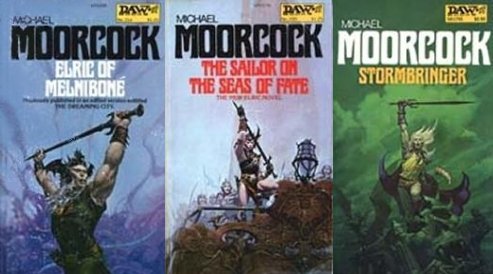 |
| References: | www.novymir.com.au/terminalcafe/elric.html#Elric%20of%20Melnibone |
![]()
![]()
| Item Name: | Muramasa |
| Games In: | Symphony of the Night, Aria of Sorrow, Dawn of Sorrow and Curse of Darkness |
| Description: | "Muramasa lived more than a century apart from Masamune. He, too, was an excellent blacksmith; however, he was said to be the exact opposite of Masamune in temperament. (See also 'masamune.')" |
![]()
![]()
| Item Name: | Mystletain |
| Games In: | Aria of Sorrow and Dawn of Sorrow |
| Description: | "This is probably a derivation of the name 'mistletoe.' The European mistletoe (Viscum album) is an evergreen parasite plant growing on the branches of trees. The name is said to be derived from the Anglo-Saxon Misteltan. In England it is called 'Herbe de la Croix' because, according to legend, the Cross was made from its wood. It was considered sacred by Druids. It was cut at a particular age of the moon with a golden knife." |
| Picture(s): |
  |
| References: | everyday.blogs.com/photos/uncategorized/mistletoe_2.jpg www.wcosf.org/other_photos/Mistletoe_1_600.JPG |
![]()
![]()
![]()
![]()
| Item Name: | Narsil |
| Games In: | Symphony of the Night |
| Description: |
"The sword 'Narsil' is described as a 'Powerful Sword of Flame.' In the novel Lord of the Rings, Narsil shattered as its holder, Elendil, fell in the Great Battle of Sauron. Aragorn, a member of the Fellowship of the Ring, repaired the ancient sword and renamed it 'Anduril,' the 'Flame of the West.' " (Thanks in part to A Rebel Yell.) |
| Picture(s): |
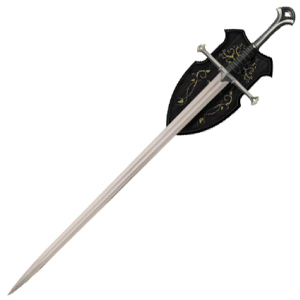 |
| References: | http://www.knifesite.com/ |
![]()
![]()
| Item Name: | Nauglamir |
| Games In: | Symphony of the Night |
| Description: | "A necklace created by the dwarves for the elves; later, one of the Silmarils was mounted within it. For further information, read also The Silmarillion by J.R.R. Tolkien." |
![]()
![]()
| Item Name: | Nebula |
| Games In: | Dawn of Sorrow and Portrait of Ruin |
| Description: | "Originally, the term 'nebula' was used for any extended astronomical object beyond the Milky Way. Nebulas are interstellar clouds of gas and dust; they are formed when diffused molecular clouds begin to collapse under their own gravity, forming stars. Others are formed by the deaths of stars, novas and supernovas. The picture shows the Horsehead Nebula. (See also Nova Ring.)" |
| Picture(s): |
 |
| References: | www.noao.edu/image_gallery/images/d4/horseheady.jpg |
![]()
![]()
| Item Name: | Neutron Bomb |
| Games In: | Symphony of the Night |
| Description: | "This is a nuclear weapon whose primary lethal effects come from radiation (instead of blast and heat), which is very destructive against living tissue. Because such bombs don't really affect physical structures, like houses and industrial installations, and don't have long-ranged effects, they are considered as 'clean weapons.' " |
![]()
![]()
| Item Name: | Ninja Cloak, Ninja Garb and Ninja Suit |
| Games In: | Circle of the Moon, Harmony of Dissonance, Aria of Sorrow and Dawn of Sorrow |
| Description: | "Shinobi or ninja were assassins trained in the Japanese art of ninjutsu, 'the art of stealth.' They followed their own special code of conduct, called 'ninpo'; most of them were also samuraļ. They used several weapons such as shurikens, handclaws and bows; however, they rarely dressed in an all black suits. Contrary to popular belief, ninja never used nunchaku, and they never practiced karate. (See also cross 'shuriken,' 'nunchaku' and 'samurai armor')." |
| Picture(s): |
 |
| References: | rpsboxe.free.fr/art-martiaux/ninja/hr/nj1.gif |
![]()
![]()
| Item Name: | Nodachi |
| Games In: | Curse of Darkness |
| Description: | "The term 'nodachi' refers to a large Japanese sword carried by foot soldiers. Because of their long length, they were generally used on open battlefields against cavalry. During times of peace, it was worn across the back as a symbol of status. They were not commonly used, because weapons such as the naginata were more effective for the same role on the battlefield. (See also Naginata.)" |
| Picture(s): |
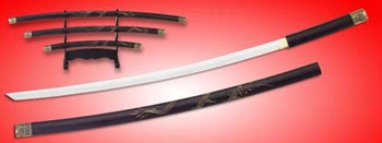 |
| References: | www.tevader.com/oldjapon/sabres.htm |
![]()
![]()
![]()
![]()
![]()
![]()
| Item Name: | Olrox Suit |
| Games In: | Aria of Sorrow and Dawn of Sorrow |
| Description: | "Olrox is the close friend of Dracula who guards the center of the castle in Castlevania: Symphony of the Night." |
| Picture(s): |
|
![]()
![]()
![]()
![]()
| Item Name: | Opal and Opal Circlet |
| Games In: | Symphony of the Night, Harmony of Dissonance and Lament of Innocence |
| Description: | "This is a Silicate (SiO2*xH2O) sometimes created by wood fossilization or made with shells of small aquatic organisms. The difference between Opal and Quartz, with its micro-sized crystals, is the presence of a twinkle, which can can be seen in the picture below. (See also 'onyx.')" |
| Picture(s): |
 |
| References: | www.shed.com/aom/cuts/aboutpics.html |
![]()
![]()
| Item Name: | Orichalcum |
| Games In: | Curse of Darkness |
| Description: | "Orichalcum, or aurichalcum, is a legendary metal mentioned in several ancient writings related to Atlantis. It was considered second only to gold in value and was found and mined in many parts of Atlantis in ancient times." |
![]()
![]()
![]()
![]()
| Enemy Name: | Oxfords |
| Games In: | Portrait of Ruin |
| Description: | "The oxford shoe, occasionally called 'Balmorals,' is a style of leather shoe with enclosed lacing. It is traditionally constructed of heavy leather and is rather plain. This shoe originally appeared in Scotland and Ireland." |
| Picture(s): |
 |
| References: | www.mens-fashion-tips.com/mens-dress-shoes-styles.html |
| Item Name: | Padded Armor |
| Games In: | Harmony of Dissonance |
| Description: | "Also called 'quilted armor,' padded armor is the simplest form of manmade armor. It consists of two or more layers of cloth, each stuffed with thick batting and sewn together; it usually covers only the chest and shoulder. This type of armor was usually worn by only the poorest and most unskilled warriors because it didn't last very long." |
| Picture(s): |
 |
| References: | www.retromud.org/armor/paddedarmor.html |
![]()
![]()
| Enemy Name: | Paludamentum |
| Games In: | Portrait of Ruin |
| Description: | "A cape generally crimson in color and worn by military commanders, including the emperors in Republican and Imperial Rome. It was fastened at the shoulder with a fibula. Putting on the paludamentum was a ceremonial act on setting out for war; it was for this reason considered a sin to again enter the gates of Rome without having putout this emblem of military power. The picture on the right is a coin showing Emperor Trajan (53-117) wearing a paludamentum." |
| Picture(s): |
 |
| References: | maa.missouri.edu/exhibits/romancoins/rc_coins.html www.probertencyclopaedia.com/cgi-bin/res.pl?keyword=Paludamentum&offset=0 |
| Item Name: | Partizan |
| Games In: | Aria of Sorrow, Dawn of Sorrow and Portrait of Ruin |
| Description: | "Also written as 'partisan,' this is a staff weapon consisting of a long, tapering double-edged spear blade with two diagonally-set flukes at the base; the heads of the partizan are large enough to allow engraving and ornamentation." |
| Picture(s): |
 |
| References: | www.snowspine.com/armory/partisan.html |
![]()
![]()
![]()
![]()
| Item Name: | Perseus Ring |
| Games In: | Lament of Innocence |
| Description: | "Perseus is the legendary Greek hero who slew Medusa." |
| Picture(s): |
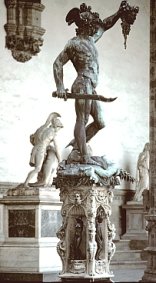 |
| References: | www.bluffton.edu/~sullivanm/lanzi/whole.jpg |
![]()
![]()
| Item Name: | Plate Mail |
| Games In: | Harmony of Dissonance and Curse of Darkness |
| Description: | "The development of plate armor began in western Europe in the 13th century and became the dominant form of protection during the 15th century. Plate armor is not as heavy as commonly believed, since a fully armored knight was expected to be able to mount and dismount unaided." |
| Picture(s): |
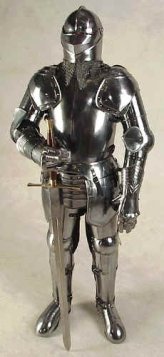 |
| References: | www.swordsandarmor.com/images/AR006_H031_Option.JPG |

